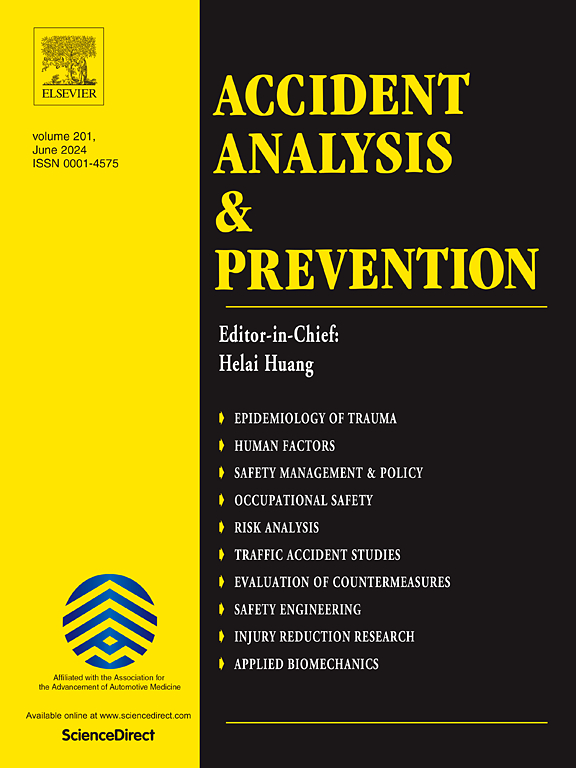Quantile-based scenario generation for automated vehicle safety evaluation
IF 5.7
1区 工程技术
Q1 ERGONOMICS
引用次数: 0
Abstract
As automated vehicles (AVs) are increasingly deployed, ensuring their safety and reliability is crucial before widespread adoption. Existing safety evaluation methods typically focus on generating a testing scenario library with a large number of safety-critical scenarios; however, this approach presents two key limitations. First, the safety testing of the testing scenario library is time-consuming, making it impractical to apply to the production qualification test for every individual production AV. Second, most methods aim to maximize the risks of the scenario, often overlooking that some highly hazardous situations are unavoidable. Considering these research gaps, this study introduces a quantile-based scenario generation method for AV safety evaluation. The proposed method generates scenarios with varying levels of risk, determined by a specified quantile of the risk index, enabling a comprehensive and efficient assessment of AV safety. With the knowledge of the quantile of the scenario library, safety evaluation can rapidly identify the safety performance of each individual AV with a theoretical bound using a limited number of tests. To address the challenge posed by the rarity of safety-critical events, an adaptive variance reduction framework based on importance sampling theory, combined with Particle Swarm Optimization, is employed to minimize estimation variance and optimize scenario distribution. Experiments validate the method’s ability to reduce estimation variance in the multi-lane scenario and demonstrate how it compares the safety performance of commercialized AVs.
基于分位数的自动车辆安全评估场景生成
随着自动驾驶汽车(AVs)的部署越来越多,在广泛采用之前,确保其安全性和可靠性至关重要。现有的安全评估方法通常侧重于生成包含大量安全关键场景的测试场景库;然而,这种方法存在两个关键的局限性。首先,测试场景库的安全测试耗时长,无法适用于每个单独的生产AV的生产资格测试。其次,大多数方法的目标是最大化场景的风险,往往忽略了一些高度危险的情况是不可避免的。考虑到这些研究空白,本研究引入了一种基于分位数的自动驾驶汽车安全性评估场景生成方法。该方法根据风险指数的指定分位数,生成具有不同风险级别的场景,从而能够全面有效地评估自动驾驶汽车的安全性。通过了解场景库的分位数,安全评估可以使用有限的测试次数,在理论范围内快速识别每个单独的自动驾驶汽车的安全性能。为解决安全关键事件稀缺性带来的挑战,采用基于重要抽样理论的自适应方差缩减框架,结合粒子群算法,最小化估计方差,优化场景分布。实验验证了该方法在多车道场景下减少估计方差的能力,并演示了它如何与商用自动驾驶汽车的安全性能进行比较。
本文章由计算机程序翻译,如有差异,请以英文原文为准。
求助全文
约1分钟内获得全文
求助全文
来源期刊

Accident; analysis and prevention
Multiple-
CiteScore
11.90
自引率
16.90%
发文量
264
审稿时长
48 days
期刊介绍:
Accident Analysis & Prevention provides wide coverage of the general areas relating to accidental injury and damage, including the pre-injury and immediate post-injury phases. Published papers deal with medical, legal, economic, educational, behavioral, theoretical or empirical aspects of transportation accidents, as well as with accidents at other sites. Selected topics within the scope of the Journal may include: studies of human, environmental and vehicular factors influencing the occurrence, type and severity of accidents and injury; the design, implementation and evaluation of countermeasures; biomechanics of impact and human tolerance limits to injury; modelling and statistical analysis of accident data; policy, planning and decision-making in safety.
 求助内容:
求助内容: 应助结果提醒方式:
应助结果提醒方式:


